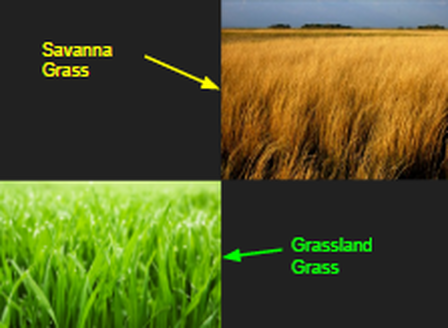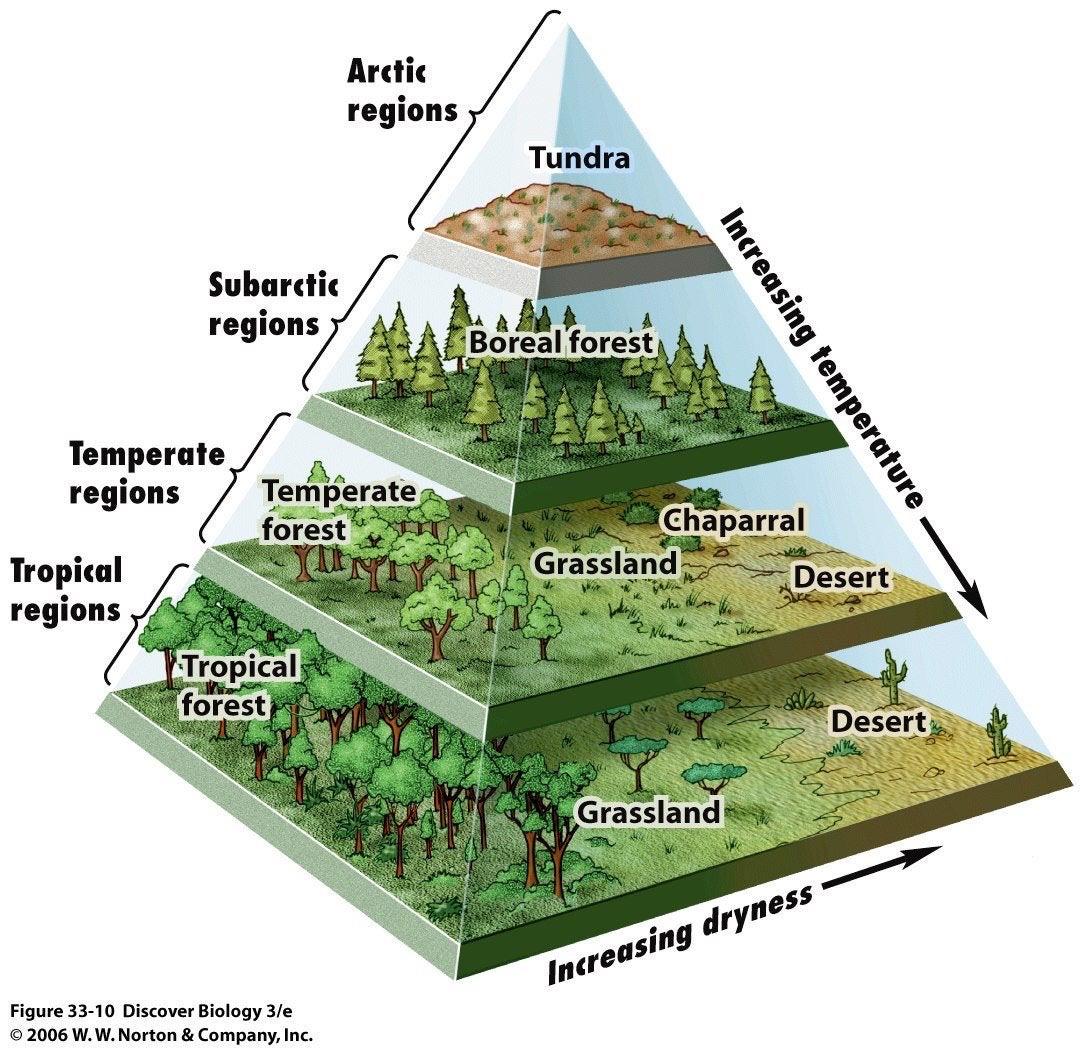The 5 Grassland Plant Survival Strategies

The vast and diverse grasslands of our planet are home to an array of resilient plant species that have evolved remarkable survival strategies to thrive in these unique ecosystems. These strategies are not only fascinating but also serve as a testament to the adaptability of life on Earth. From enduring harsh climatic conditions to competing for resources, grassland plants have developed ingenious ways to ensure their survival and dominance. In this article, we delve into the top five survival strategies employed by these resilient flora, uncovering the secrets behind their success in one of the most dynamic and challenging environments on our globe.
Drought Tolerance: The Art of Water Conservation

Grasslands are characterized by their unpredictable rainfall patterns, with periods of drought being a common occurrence. To combat this, many grassland plants have evolved sophisticated mechanisms for water conservation. One such strategy is the development of deep root systems, which tap into water sources deeper underground. For instance, the Andropogon gerardii, commonly known as the big bluestem, boasts an extensive root system that can reach depths of up to 10 feet (3 meters), allowing it to access water reserves that shallower-rooted plants cannot.
Additionally, many grassland plants have adapted their leaves to minimize water loss through transpiration. Some species, like the silver pussytoes (Antennaria plantaginifolia), possess small, hairy leaves that reduce surface area and limit evaporation. Others, such as the prickly pear cactus (Opuntia spp.), have evolved thick, succulent leaves or stems that store water, enabling them to survive prolonged dry spells.
An intriguing strategy employed by certain grasses is the ability to roll up their leaves during periods of drought. This simple yet effective mechanism reduces the leaf surface area exposed to the sun, thereby decreasing water loss. Once rainfall returns, the leaves unfurl, allowing the plant to photosynthesize efficiently again.
Case Study: The Resilient African Grasslands
The African savannah, with its iconic elephants and lions, is home to a diverse array of drought-tolerant plants. One notable example is the red grass (Themeda triandra), which has adapted to the region’s erratic rainfall patterns. During dry spells, this grass species enters a state of dormancy, reducing its water consumption and conserving energy until more favorable conditions return.
Another fascinating strategy employed by African grassland plants is the production of specialized structures called “turgor-maintained structures.” These structures, found in species like the buffalo grass (Cenchrus ciliaris), maintain their rigidity even when the plant is under water stress. This allows the plant to remain upright and continue photosynthesizing, even during periods of extreme drought.
Fire Resistance: Embracing the Flames

Grasslands are often characterized by their propensity for wildfires, which can be both a destructive and regenerative force. Many grassland plants have evolved remarkable fire resistance strategies to ensure their survival and even thrive in post-fire environments.
One such strategy is the development of thick, insulating bark that protects the plant’s vital tissues from the intense heat of fires. The black ironbark eucalyptus (Eucalyptus sideroxylon), for instance, possesses a corky bark that can withstand temperatures exceeding 200°C (392°F), providing a crucial defense mechanism against wildfires.
Some plant species have taken fire resistance a step further by actually benefiting from fire. Certain grasses, like the California meadowfoam (Limnanthes douglasii), have seeds that require fire-induced heat to germinate. This strategy ensures that the plant’s offspring can take advantage of the post-fire conditions, where competition from other plants is reduced and nutrients are readily available.
Additionally, some grassland plants have evolved mechanisms to rapidly resprout after a fire. The black sage (Salvia mellifera), a common shrub in California’s grasslands, possesses a robust root system that can quickly regenerate new growth, allowing the plant to recover swiftly after a fire event.
Fire-Induced Bloom: A Phenomenon of Renewal
In certain grassland ecosystems, fires trigger an impressive display of floral blooms. This phenomenon, known as fire-induced bloom, is a strategy employed by some plant species to take advantage of the post-fire conditions. As the fire clears away competing vegetation and releases nutrients into the soil, these plants burst into vibrant blooms, attracting pollinators and ensuring their reproductive success.
One example of a fire-induced bloomer is the Western Australian species, Calothamnus quadrifidus, commonly known as the one-sided bottlebrush. After a fire event, this shrub produces an abundance of bright red flowers, creating a stunning display that contrasts with the charred landscape.
Competitive Exclusion: The Art of Outcompeting Neighbors
Grasslands are often dominated by a few species that have evolved strategies to outcompete their neighbors for essential resources like sunlight, water, and nutrients. These dominant species, known as “grassland giants,” employ various tactics to ensure their survival and proliferation.
One common strategy is the rapid growth and establishment of an extensive root system. By quickly spreading their roots, these plants can access a larger volume of soil, thereby securing a more stable supply of water and nutrients. The switchgrass (Panicum virgatum), a prominent grassland species in North America, exemplifies this strategy with its dense root system that can reach up to 15 feet (4.5 meters) deep.
Additionally, some grassland giants have developed tall growth habits, allowing them to capture more sunlight and shade out competing species. The big bluestem, mentioned earlier, can reach heights of up to 10 feet (3 meters), giving it a significant advantage over shorter plants in the quest for sunlight.
Another clever strategy employed by some grasses is the production of allelopathic compounds. These chemicals, released into the soil, can inhibit the growth of neighboring plants, creating a competitive advantage for the allelopathic species. The common velvet grass (Holcus lanatus), for instance, produces compounds that suppress the growth of other plant species, ensuring its dominance in the grassland ecosystem.
The Impact of Grazing on Competitive Strategies
Grazing by herbivores, such as cattle and wild ungulates, can significantly influence the competitive strategies of grassland plants. In response to grazing pressure, some plant species have evolved thorny or tough leaves, making them less palatable to herbivores. This strategy not only reduces their attractiveness as a food source but also allows them to conserve energy that would otherwise be spent on regrowth.
Additionally, grazing can create a patchwork of different plant communities within a grassland. As herbivores selectively feed on certain species, they can open up spaces for other plants to establish, thereby promoting biodiversity and ensuring the survival of less dominant species.
Adaptability to Soil Conditions: A Mastery of Nutrient Uptake
Grasslands vary greatly in their soil conditions, from nutrient-rich loams to nutrient-poor sandy soils. To thrive in these diverse environments, grassland plants have evolved specialized strategies for nutrient uptake.
In nutrient-poor soils, many plant species have developed associations with mycorrhizal fungi. These fungi form a symbiotic relationship with the plant’s roots, extending the root system’s reach and increasing its ability to absorb nutrients. In return, the plant provides the fungus with carbohydrates, a mutually beneficial arrangement.
Some grassland plants have also evolved the ability to fix atmospheric nitrogen. This process, carried out by specialized bacteria residing in the plant’s root nodules, converts atmospheric nitrogen into a form that the plant can utilize. Species like the white clover (Trifolium repens) and alfalfa (Medicago sativa) are well-known for their nitrogen-fixing capabilities, allowing them to thrive in nutrient-deficient soils.
The Role of Soil Microorganisms
Soil microorganisms play a crucial role in the nutrient cycling and overall health of grassland ecosystems. These tiny organisms, including bacteria and fungi, break down organic matter, releasing nutrients that can be absorbed by plant roots. They also contribute to soil structure, enhancing its ability to retain water and nutrients.
Certain grassland plants have developed strategies to attract and support these beneficial microorganisms. For example, some species produce specific root exudates that attract and nourish certain types of bacteria, creating a favorable environment for nutrient cycling and plant growth.
Reproductive Strategies: Ensuring Genetic Diversity

To ensure the survival of their species, grassland plants employ a variety of reproductive strategies that promote genetic diversity and adaptability. One common strategy is the production of abundant seeds, which increases the likelihood of successful germination and establishment in different environmental conditions.
Some plant species have developed specialized seed dispersal mechanisms. For instance, the tumbleweed (Salsola kali) releases its seeds as it tumbles across the grassland, dispersing them over a wide area. This strategy ensures that the seeds can reach new habitats and establish populations in favorable locations.
Additionally, many grassland plants have evolved the ability to reproduce asexually, through processes like vegetative propagation or apomixis. This allows them to produce offspring that are genetically identical to the parent plant, ensuring the preservation of successful genetic traits. Species like the common dandelion (Taraxacum officinale) can propagate through their roots, producing new plants without the need for seeds.
The Importance of Pollinators
Pollinators play a vital role in the reproductive success of many grassland plant species. Bees, butterflies, and other pollinators transfer pollen from one flower to another, facilitating fertilization and seed production. In return, the plants often provide rewards such as nectar or pollen, fostering a mutually beneficial relationship.
Some grassland plants have evolved specific adaptations to attract pollinators. For example, the purple coneflower (Echinacea purpurea) produces vibrant purple flowers with a distinctive cone shape, which not only provides a landing platform for pollinators but also houses the plant’s reproductive structures.
The presence of diverse pollinator species in grasslands contributes to the overall health and resilience of these ecosystems. As pollinators move between different plant species, they promote cross-pollination, ensuring genetic diversity and adaptability among the plant populations.
| Grassland Plant | Survival Strategy |
|---|---|
| Big Bluestem | Deep root system, drought tolerance, rapid growth |
| Prickly Pear Cactus | Water storage in succulent leaves, drought tolerance |
| Red Grass | Drought tolerance, dormancy during dry spells |
| Black Ironbark Eucalyptus | Thick, insulating bark for fire resistance |
| Switchgrass | Extensive root system, rapid growth, competitive exclusion |

How do grassland plants adapt to different soil conditions?
+Grassland plants have evolved various strategies to adapt to different soil conditions. In nutrient-poor soils, they often form associations with mycorrhizal fungi, which enhance nutrient uptake. Some species can also fix atmospheric nitrogen, converting it into a usable form. Additionally, certain plants produce root exudates that attract and nourish specific bacteria, promoting nutrient cycling.
What is the significance of fire-induced bloom in grasslands?
+Fire-induced bloom is a strategy employed by certain grassland plants to take advantage of post-fire conditions. As fires clear away competing vegetation and release nutrients into the soil, these plants burst into vibrant blooms, attracting pollinators and ensuring their reproductive success. This phenomenon promotes biodiversity and the regeneration of grassland ecosystems.
How do grassland plants ensure genetic diversity through reproductive strategies?
+Grassland plants employ various reproductive strategies to ensure genetic diversity. They produce abundant seeds, which increases the likelihood of successful germination and establishment in different environmental conditions. Some species also have specialized seed dispersal mechanisms, ensuring their seeds reach new habitats. Additionally, many plants can reproduce asexually through vegetative propagation or apomixis, preserving successful genetic traits.
What is the role of pollinators in grassland ecosystems?
+Pollinators are crucial for the reproductive success of many grassland plant species. They transfer pollen from one flower to another, facilitating fertilization and seed production. In return, the plants often provide rewards like nectar or pollen. The presence of diverse pollinator species contributes to genetic diversity and the overall health and resilience of grassland ecosystems.



